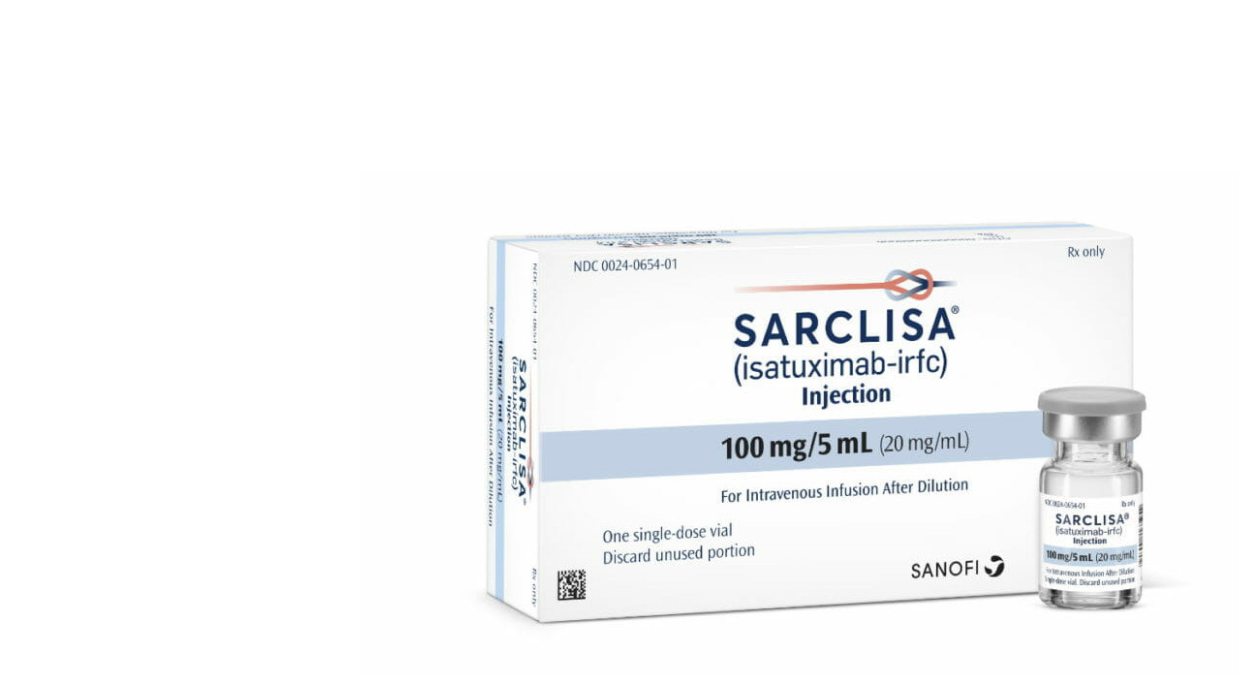Sanofi Secures EU Approval For Sarclisa To Treat Newly Diagnosed Multiple Myeloma In Patients Eligible For Stem Cell Transplant
Sarclisa + VRd now approved in the EU as induction therapy for transplant-eligible multiple myeloma patients after Phase 3 success.
Breaking News
Jul 26, 2025
Simantini Singh Deo

The European Commission has granted approval for the use of Sarclisa (isatuximab) in combination with bortezomib, lenalidomide, and dexamethasone (commonly referred to as VRd) as induction therapy for adults newly diagnosed with multiple myeloma who are eligible for autologous stem cell transplant. This decision follows a positive recommendation from the European Medicines Agency’s Committee for Medicinal Products for Human Use (CHMP) issued on June 19, 2025.
The approval is based on data from the first part of the GMMG-HD7 Phase 3 clinical trial (clinical identifier: NCT03617731), a two-part, double-randomized study conducted by the German-speaking Myeloma Multicenter Group. The study was designed to evaluate the effects of Sarclisa both during the induction and maintenance treatment phases independently.
In the induction phase of the study, patients receiving Sarclisa in combination with VRd demonstrated a faster and deeper treatment response compared to those who received VRd alone. A key measure of effectiveness in this study was the rate of minimal residual disease (MRD) negativity at the end of the 18-week induction period, which served as the primary endpoint. The addition of Sarclisa led to a statistically significant improvement in MRD negativity, suggesting that more patients had no detectable cancer cells following the initial treatment phase.
Further supporting these findings, final analysis of progression-free survival (PFS) during the induction and transplant phases showed that patients treated with the Sarclisa-VRd combination had a clinically meaningful and statistically significant extension in the time their disease remained under control, regardless of the maintenance therapy they later received.
Olivier Nataf, Global Head of Oncology at Sanofi, stated, “We have been on a mission to accelerate Sarclisa’s clinical development program with the hope to bring this important medicine to as many people as possible living with multiple myeloma. Today’s decision represents a prime example of those efforts, and most importantly, paves the way for Sarclisa to potentially become accessible to even more patients in the EU, regardless of transplant eligibility or line of therapy.”
Another important outcome from the trial was the sustained MRD negativity, which refers to the persistence of undetectable disease from the post-induction phase through the post-transplant phase. This sustained response was observed in 53.1% of patients treated with Sarclisa-VRd, compared to 38% of those who received only VRd. This result was consistent with the observed PFS benefit and supports the long-term impact of the Sarclisa combination in transplant-eligible patients.
These findings strengthen the clinical case for using Sarclisa earlier in the treatment journey for multiple myeloma. While data from the second part of the study, focused on the maintenance phase, are still awaited, this approval marks an important step forward. Sarclisa now has four approved indications globally, including two in the front-line setting, reinforcing its position as a key treatment option in multiple myeloma and demonstrating Sanofi’s commitment to improving outcomes across all stages of the disease.
